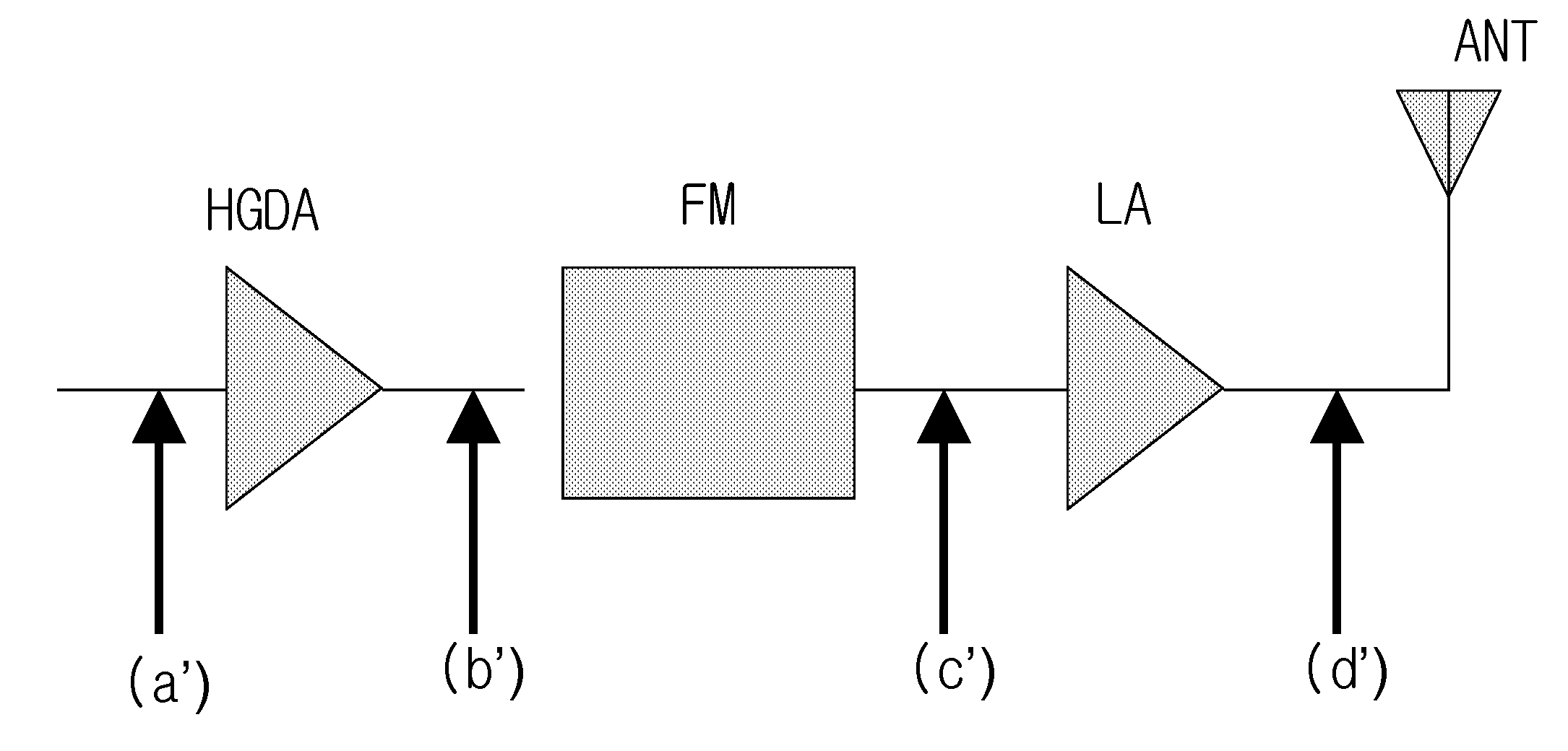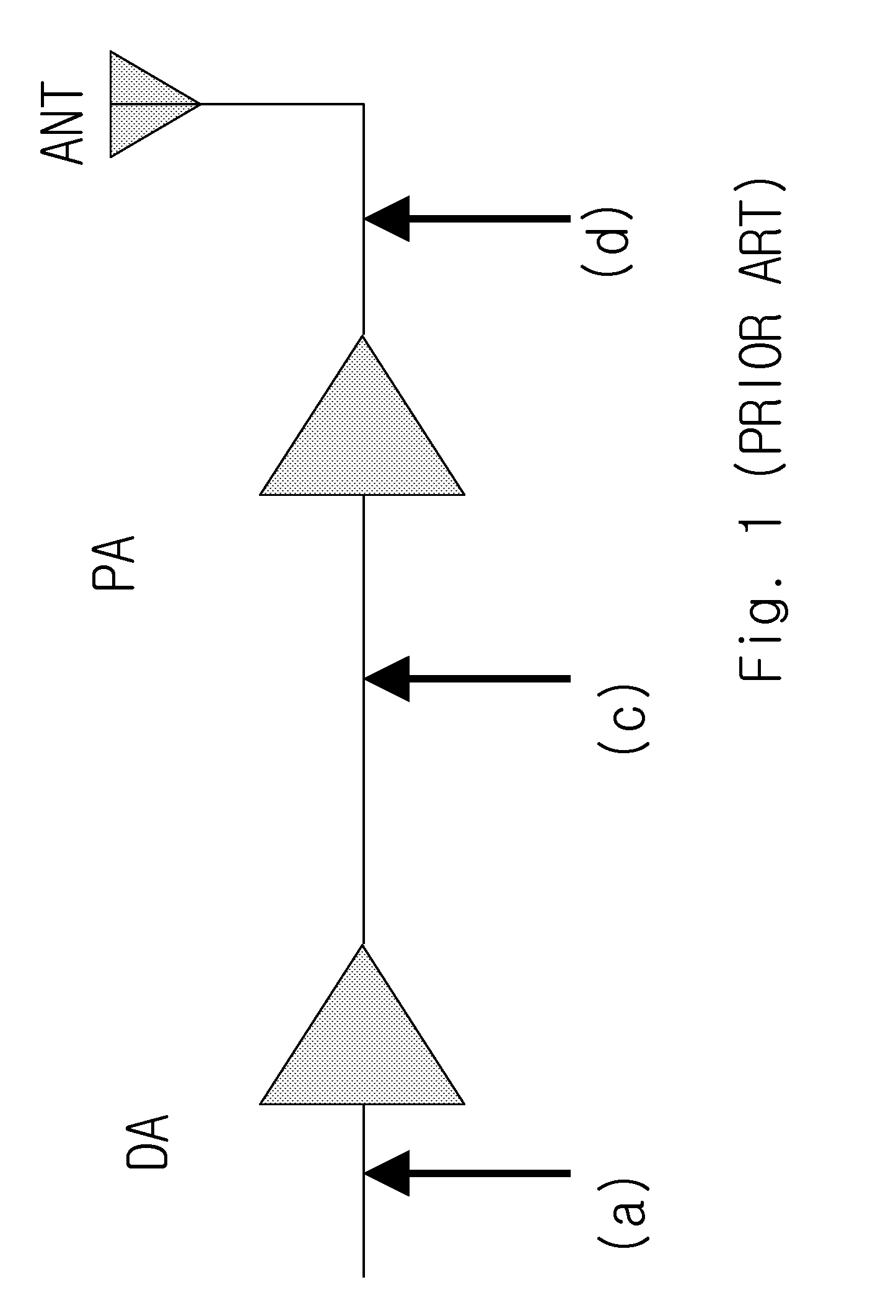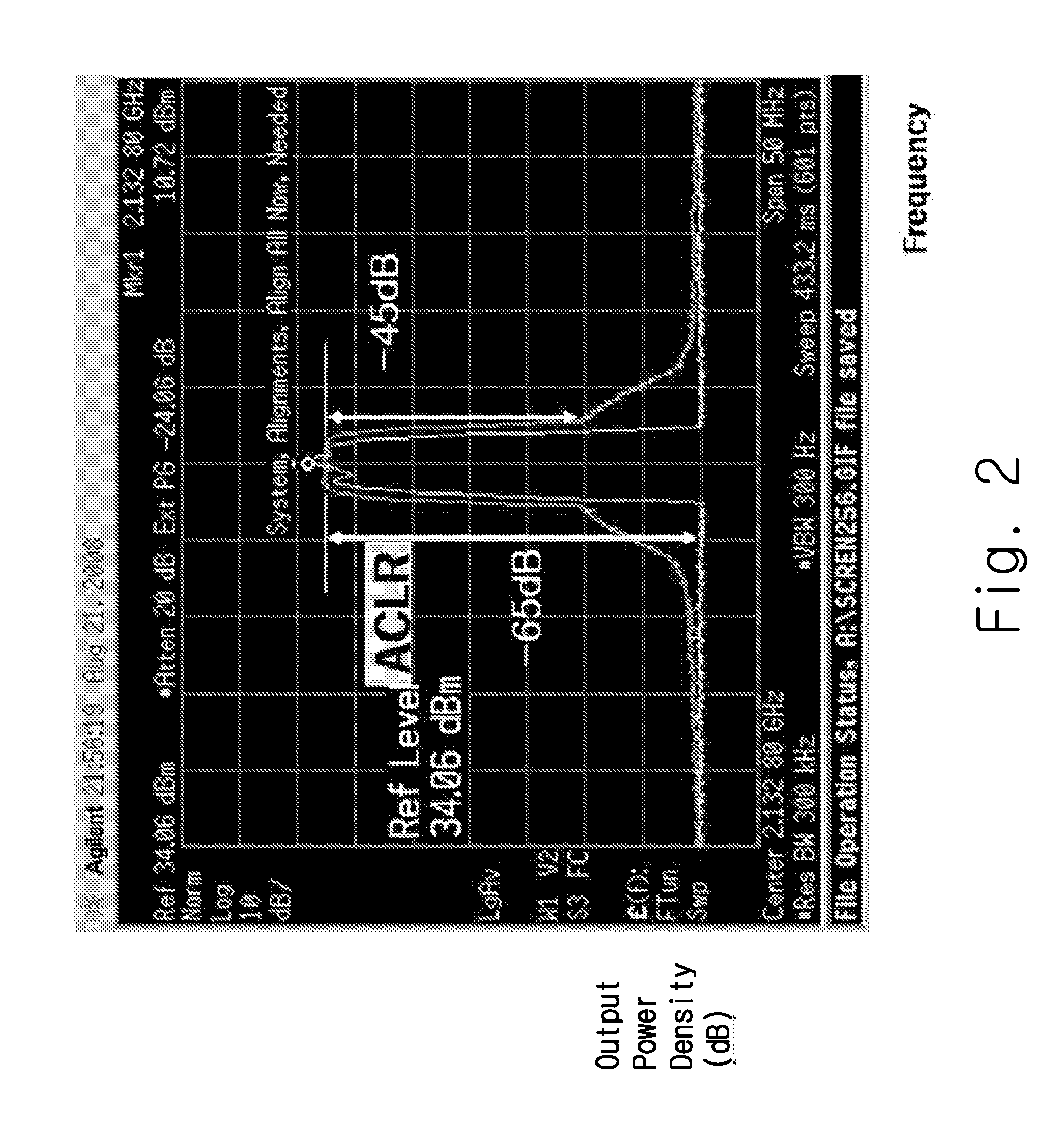Amplification system for interference suppression in wireless communications
a technology of interference suppression and wireless communication, applied in the direction of amplifiers, antennas, electricly long antennas, etc., can solve the problems of low power efficiency of mobile telecommunication equipment, low power output efficiency of stationary communication equipment, and the quality of rf signal radiated to an open space that needs to be extremely high, so as to achieve the effect of increasing signal strength
- Summary
- Abstract
- Description
- Claims
- Application Information
AI Technical Summary
Benefits of technology
Problems solved by technology
Method used
Image
Examples
Embodiment Construction
[0032]The present invention is an amplification system to suppress interference in mobile telecommunication equipment, while increasing RF power output efficiency. The present invention is also a method of implementing the suppression of interference in mobile telecommunication equipment, while increasing RF power output efficiency of the in mobile telecommunication equipment and maintaining the required ACLR. Whereby, RF power output efficiency is defined as: total RF radiation power of the stationary communication unit divided by DC electric power required by an output power amplifier of the stationary communication unit in order to generate that total RF radiation power. The amplification system of the present invention provides signal characteristics of a large isolation, sharp skirt, a good ripple, and acceptable S11 and S12 properties.
[0033]The amplification system of the present invention includes a High Gain Driving Amplifier (HGDA), Filter Module (FM), and a Linearization R...
PUM
 Login to View More
Login to View More Abstract
Description
Claims
Application Information
 Login to View More
Login to View More - R&D
- Intellectual Property
- Life Sciences
- Materials
- Tech Scout
- Unparalleled Data Quality
- Higher Quality Content
- 60% Fewer Hallucinations
Browse by: Latest US Patents, China's latest patents, Technical Efficacy Thesaurus, Application Domain, Technology Topic, Popular Technical Reports.
© 2025 PatSnap. All rights reserved.Legal|Privacy policy|Modern Slavery Act Transparency Statement|Sitemap|About US| Contact US: help@patsnap.com



